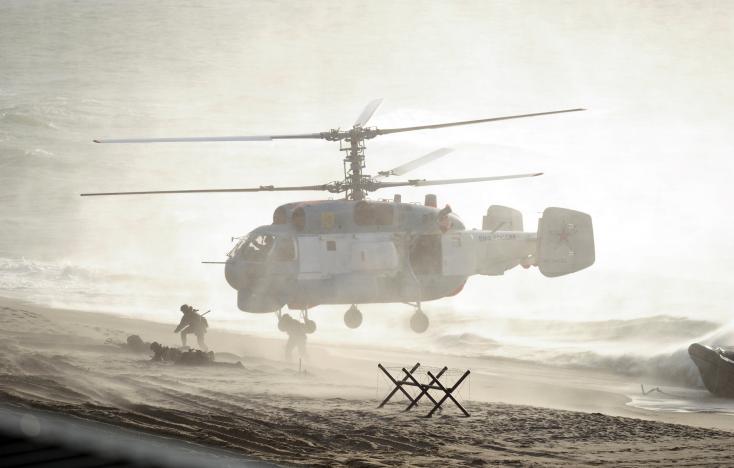According to a new report released by Lithuania’s intelligence service said on Monday, Russia has upgraded its military presence in the region, permitting them to launch an attack on the Baltic states with as little as twenty-four hours’ notice, meaning even the recently upgraded NATO countermeasures may no longer be sufficient to engage or repel a Russian invasion.
Lithuania, Latvia, and Estonia were all annexed by the Soviet Union in the 1940s, but following its fall in the early 90’s, each of the three nations became members of both NATO and the European Union. They have each also grown increasingly nervous about the possibility of history repeating itself since Russia militarily annexed Crimea from the Ukraine in 2014, and NATO had been placing thousands of troops throughout Europe’s Eastern border with Russia for just such a possibility.
Lithuania produces annual reports on the state of the Russian threat to their nation and the surrounding region, but this year’s report came with a foreboding warning: Russia has been amassing troops and equipment in the Kalingrand region since last year’s report was filed – making the lead time necessary for a Russian attack significantly shorter than that of any NATO response that could currently be mounted.
Included among the recent Russian upgrades are Su-30 fighter aircraft and missile systems that could place any ships in the Baltic Sea directly in Russian crosshairs.
“This is a signal to NATO to improve its decision speed,” Lithuanian Defence Minister Raimundas Karoblis told reporters on the sidelines of the presentation of the report. “NATO’s reaction time is not as fast as we would like it to be.”
NATO is actively deploying forces of around 1,000 troops to each of the Baltic states and to Poland, in addition to U.S. troops that have already arrived in the region. These moves were made prior to the release of Monday’s report, and were hoped to provide a sufficient presence to respond rapidly to any potential Russian incursion. According to Lithuania’s intelligence service, however, the new troop placements may not be enough.
“The force is adequate in the short-term, but in the medium-term perspective we would like more capability, and not only land troops but also air defenses and capabilities to counter any blockade,” Karoblis said.
In addition to a larger Russian presence near the border, they have also actively been monitoring and suppressing radio frequencies used by NATO pilots over the Baltic Sea – the same waterway new missile placements are intended to offer strike capability over. According to the report, commercial and scientific ships out of Russia are also being used throughout the Baltic to conduct surveillance on troop movements and equipment deployed by NATO.
Of course, Russia did not miss an opportunity to decry any such accusations as paranoia adding to what they feel is an unfounded anti-Russian sentiment that’s been building throughout the West. Kremlin spokesman Dmitry Peskov released a statement widely reported on by Kremlin owned propaganda outlets like Sputnik News claiming the new report, and governmental responses to it, are caused by “Russophobia.”
“If this information is true … this is probably another blatant manifestation of Russophobia which is being imposed both in the countries themselves and from the outside of the Baltic states. This total Russophobia, hysterical Russophobia is unlikely to correspond to interests of the people of these countries, and definitely does not correspond to the interests of the Russian-speaking population of these countries.”
Of course, it seems unlikely that Lithuanian leaders, nor their NATO counterparts, will sleep easily simply taking Putin’s mouth piece at his word, and assume a ramp up of military personnel in the region is merely a coincidence – so a shift in NATO’s policy seems likely. A standing treaty between Russia and the United States disallows American troops to be permanently deployed to the Russian border – which is why strategic commands have been placed throughout the area to rapidly respond to border threats without actually maintaining a presence, but it stands to reason that discussions may soon develop as to how important that treaty is, and what the alliance can do to circumvent it in the interest of protecting the allied nations that face the largest Russian risks.
Already have an account? Sign In
Two ways to continue to read this article.
Subscribe
$1.99
every 4 weeks
- Unlimited access to all articles
- Support independent journalism
- Ad-free reading experience
Subscribe Now
Recurring Monthly. Cancel Anytime.
Image courtesy of Reuters











COMMENTS
You must become a subscriber or login to view or post comments on this article.